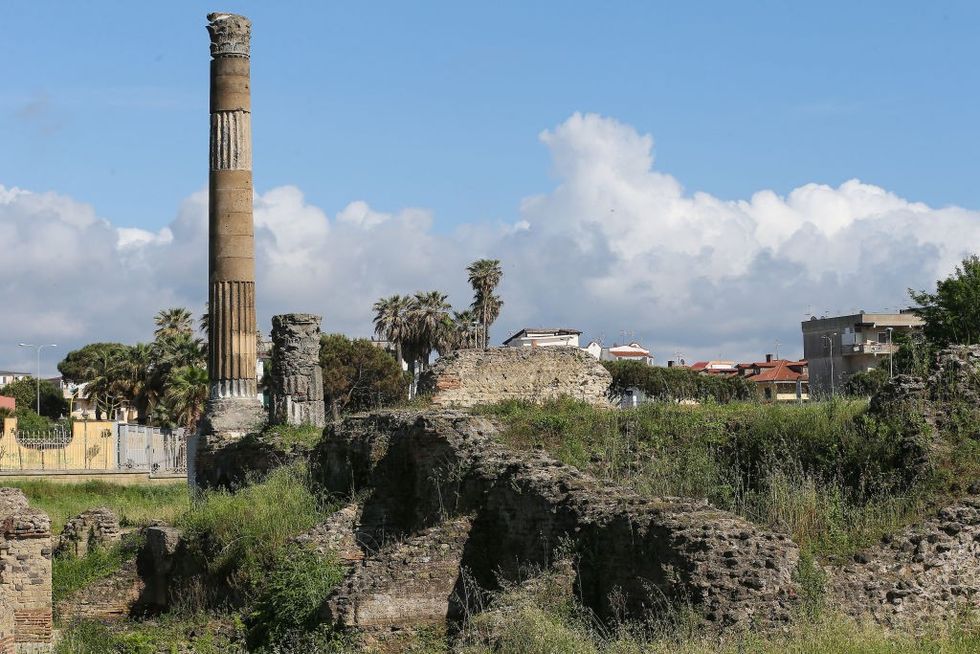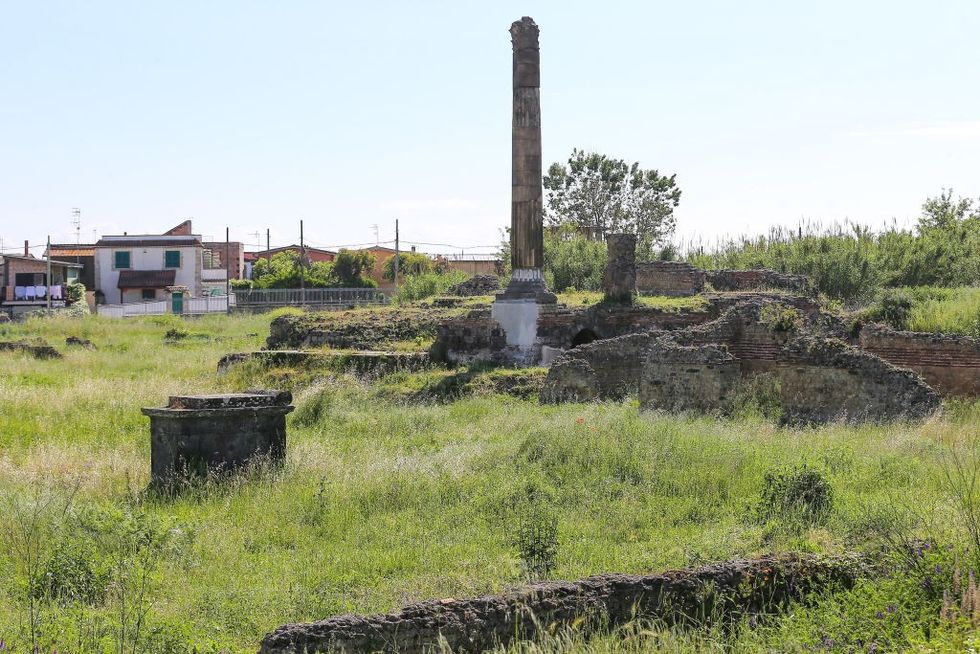Archaeology breakthrough as gladiator's marble-etched tomb found in ancient Roman necropolis
Experts believe the necropolis may contain remains of numerous gladiators
Don't Miss
Most Read
Trending on GB News
Archaeologists have unearthed a gladiator's tomb with a marble-etched inscription in an ancient Roman necropolis near Naples.
The discovery was made at a 1,600-square-foot burial site that was once part of the ancient town of Liternum, not far from a forum and amphitheatre where gladiatorial contests were held.
Experts identified the tomb as belonging to a gladiator thanks to a funerary inscription carved into marble. The inscription references the significant role these famed fighters played in Roman society.
Archaeologists believe the necropolis may contain remains of numerous gladiators. The excavation is being led by archaeologist Simona Formola, who noted that work is only beginning on the expansive site.

The Liternum area, in the territory of Giugliano in Campania
Getty
Two funerary enclosures have been discovered with remarkably well-preserved original designs. Some sections feature white plaster decorations, whilst others display red detailing.
A quadrangular mausoleum constructed with grey tuff blocks up to 10 feet long was also uncovered. Inside the tombs, archaeologists found plastered niches that once housed cinerary urns.
This suggests the necropolis was in use for an extended period. Approximately 20 tombs have been discovered at the site so far.
Archaeologists believe they were in use from the first century BC until the third century AD. The dating was confirmed through discoveries of coins, oil lamps and small vases found within the burial chambers.
LATEST DEVELOPMENTS

The ruins of the last house of Scipio the African
Getty
Researchers have identified various burial styles throughout the necropolis. Some sections of tombs were covered with roof tiles, whilst others contained remains placed in carefully crafted boxes.
A deep well was also found at the site. Experts believe this was used for ceremonies or rituals as part of Roman funerary traditions.
Marian Nuzzo, superintendent of archaeology for Naples, highlighted the significance of the find in a statement, reports Popular Mechanics.
"The territory of Giugliano is experiencing a particularly fruitful moment from the point of view of archaeological research," she said.
Nuzzo noted this discovery follows the recent finding of the Tomb of Cerberus. She emphasised the "excellent state of conservation" of the wall structures and burials.
The necropolis "adds an important piece to our knowledge related to the settlement of the Liternum colony," Nuzzo explained.
She called it "a unique opportunity to deepen the study of ancient civilization, and the historical and cultural context of the time."
Archaeologists will continue working in the area, hoping to uncover more history from the site. The team aims to learn more about the organisation of the surrounding Roman colony, which Nuzzo described as "little-known".
Since Roman necropolises typically lined the sides of important roads, researchers hope to develop new theories about the layout of the ancient Via Domitiana.









